By following a strict and balanced diet, diabetes can be cured. A diet for diabetes mellitus will slow down the rate of development of the disease and have a beneficial effect on the patient's condition. It must be observed constantly. The main methods of preventing unwanted consequences are self-discipline and a varied menu for diabetics.
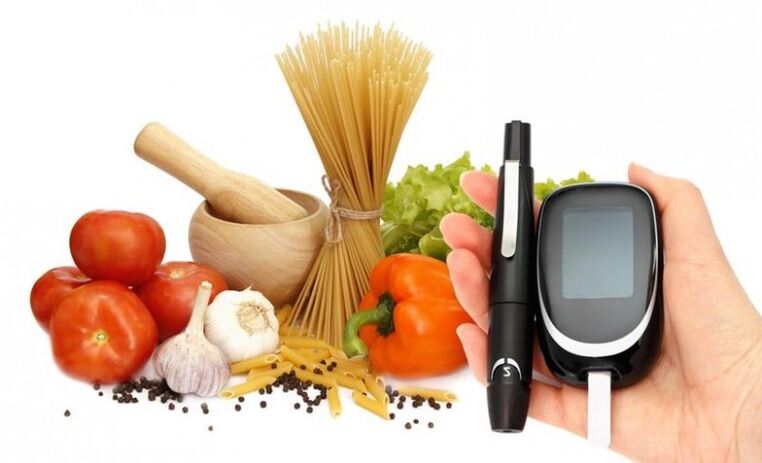
General recommendations
When diabetes is just beginning, it is imperative to set limits on foods that are high in carbohydrates and sugars, as they can increase blood glucose levels. However, regardless of the established restrictions, the body needs a balanced supply of useful components. In this case, doctors prescribe a diet meal for the patient. Failure to follow a diet can have a negative impact on your health. Of course, prescribed medications must be taken. But a detailed diabetes diet, compiled by a doctor, will only improve physical condition.
To control hunger, you need to eat often, at least 5-6 times a day and in small portions, including main meals and snacks.
For patients with diabetes mellitus, there are principles of diet therapy. If you have first degree obesity, it is better to give preference to fruits and vegetables instead of flour or fatty foods. It is more useful to season salads with olive oil with the addition of a couple of drops of lemon. To speed up the metabolic processes of the liver, low-fat cottage cheese, soy, oatmeal and lean fish should be present in the diet. It is better to prepare vegetable broths from first courses. You should wait with meat broths or cook soups on a secondary broth. Need to limit the consumption of eggs, potatoes, corn. If there are any, then very few and rarely. As for salt, the recommended daily portion is less than half a teaspoon. And it is desirable that it was sea salt.
Nutritional characteristics for different categories
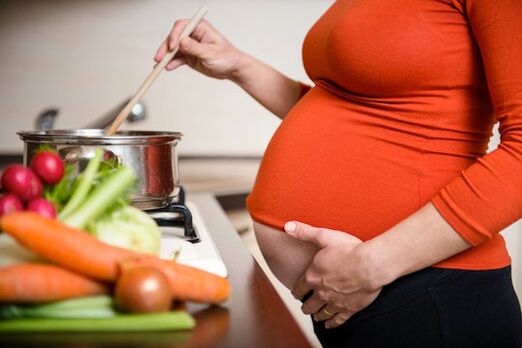
The fact is that the purpose of the diet depends on the type of diabetes mellitus and the category to which the person belongs: for children, for pregnant women, for insulin-dependent people, or with diabetes of onset, nutrition varies . Although the general dietary principles apply to all categories, each of them requires a separate approach in this matter.
Simple food is the best nutrition for pregnancy with associated diabetes.
A strict diet for people with type 1 diabetes, that is, for people who need insulin, should consist of foods rich in protein and fiber. You will need to limit your intake of salt, fat, fast carbohydrates, and foods that irritate the gastrointestinal tract and also contain sugar.
In contrast to insulin maintenance diabetes, in type II diabetes mellitus, diet helps reduce the calorie content of foods and normalize metabolism. With an excess of blood sugar, such a diet will affect its reduction. The same diet will serve during the onset of diabetes. A pregnant woman's diet should be as balanced as possible without harming the baby. The best diet for an expectant mother is simple food.
Information on the glycemic index and calories
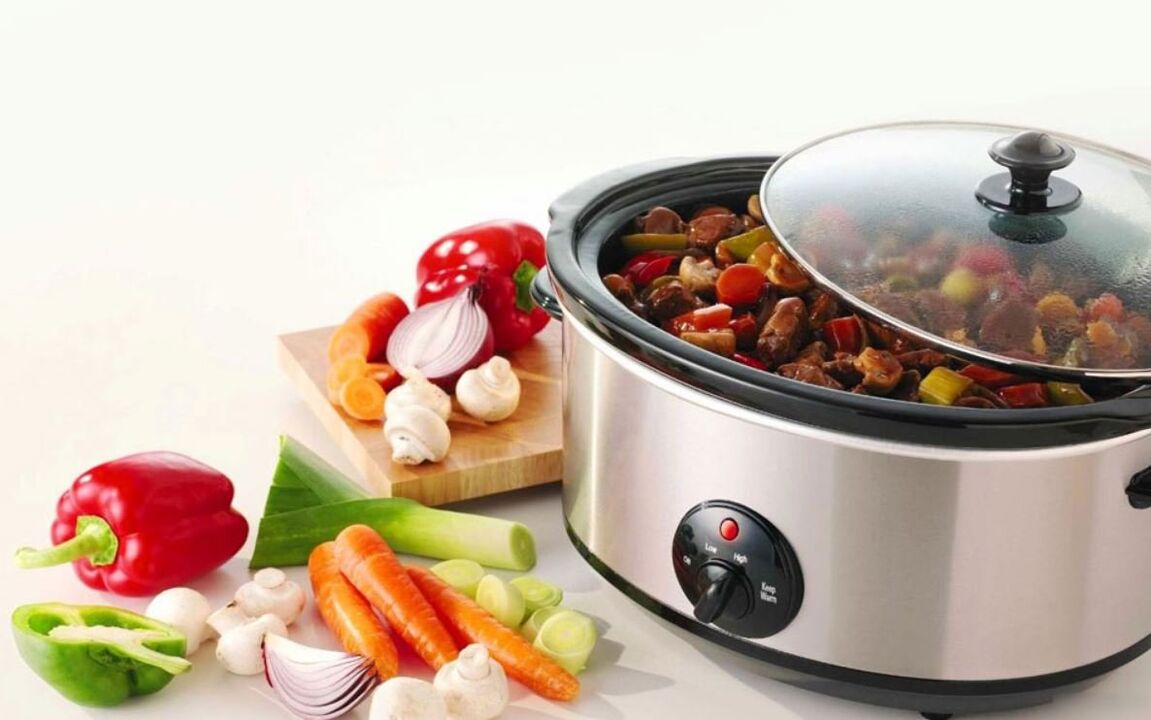
The nutritional value of the products determines how many useful components will be converted into energy for the body. And the glycemic index of foods indicates how quickly carbohydrates are absorbed, increasing blood sugar levels. Therefore, with type 2 diabetes mellitus, you should eat foods with a low glycemic index, since the carbohydrates available in them have time to be spent by the body and evenly distributed in it. And carbohydrates in food with such a high rate contribute to the deposition of fat, not having time to fully convert into energy.
In addition to the number of calories, the value of the glycemic index of various foods can be found from the tables on a scale from 0 to 100. But in order to effectively plan a diet, it is necessary to take into account a number of factors that influence the change in content caloric and glycemic index. The main ones include:
Cooking in a slow cooker is one of the acceptable ways to reheat food.
- Cooking method. The glycemic index of foods increases with heat treatment, especially if fried. Products should be baked, boiled, or cooked in a slow cooker.
- Properties of fibers. Eating the peels of fruit, grains and beans will slow the breakdown of glucose, preventing an increase in the glycemic index.
- The maturity of fruit and vegetables. The riper the fruit, the more high-calorie it is.
What can you eat?
The initial stage of diabetes may not be complicated if dietary treatment is strictly followed.
Here is a list of foods that can diversify the menu of your daily diet as much as possible:
- soups based on vegetable broths, as well as lean meat first courses 1-2 times a week;
- wholemeal bread and bran;
- cooked, steamed or baked chicken, turkey, rabbit, young beef;
- maximum dietary seafood and fish of lean varieties: pink salmon, hake, pike;
- buckwheat, wheat porridge, oatmeal;
- low-fat milk and cottage cheese;
- 1 egg per day;
- unsweetened vegetables and fruit;
- homemade vegetable and dairy sauces;
- sweets and dishes for diabetics;
- any tea, coffee with milk, herbal teas (especially with the addition of wild rose), unsweetened fresh fruit juices.
What should not be consumed?
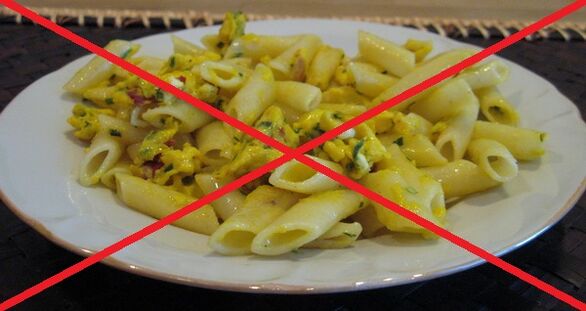
People with high blood sugar will have to give up on pasta.
Foods not recommended for diabetics are listed below:
- high-calorie sweets and pastries;
- chocolate and cocoa;
- jam, jam and honey;
- fresh and dried fruits rich in sugar, such as grapes and bananas, figs, raisins and dates;
- dishes with fatty meat;
- Animal fat;
- pasta, rice and semolina;
- smoked and canned;
- high-fat, high-sugar dairy products;
- alcoholic beverages.
How to replace the damage?
Delicious and sweet foods should be excluded from the diabetes menu. But harmful products need the right replacement. Diabetic food is the simpler alternative. Options for replacing banned products can be found on both the shelves of regular grocery stores and specialty stores. The table indicates which healthy foods can replace the prohibited ones.
| Forbidden food | What to replace |
|---|---|
| White flour bread | Peeled rye bread |
| Sweets and desserts | Fruits of trees and shrubs, sweets for diabetics |
| Animal fats | Vegetable oils |
| Fatty meats and cheeses | Lean meat, avocado |
| Cream | Low-fat dairy products |
Table number 9
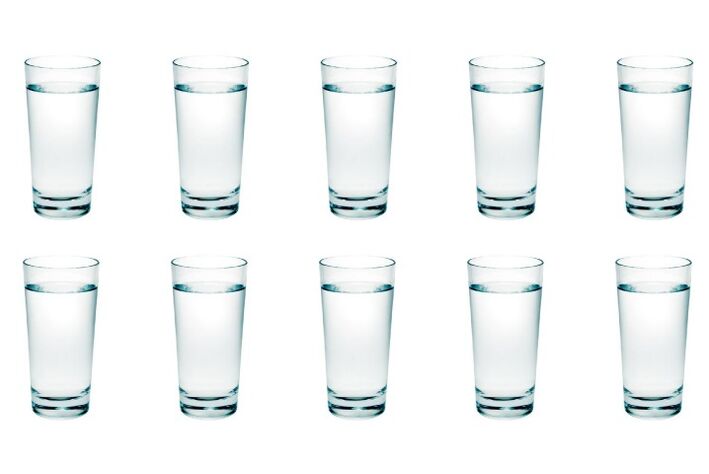
The diet plans to drink about 2 liters of water per day.
According to diet number 9, no more than 2, 400 calories per day are allowed. When translated into grams, this equates to 85g of protein, 80g of vegetable fat and 300g of carbohydrates. The diet for suspected diabetes mellitus should be physiologically balanced.
With diabetes and types 1 and 2, the daily water intake should be 2-3 liters at the rate of 30-40 mm per kilogram of body weight. It is recommended to use only purified water, free from microbes and pathogenic bacteria.
Prolonged lack of clean water can lead to dehydration / dehydration. For a diabetic, the loss of 25% of body fluids can be fatal.
Along with clean water, diabetics can use "mineral water". However, it can be different. The tabletop versions with a mineralization of up to 1 g per liter can drink without restrictions. They contain safe amounts of minerals. Eating "mineral water" stimulates digestion and improves insulin absorption. Before use, open the bottle and wait for the gases to "escape" from it.
Sample menu
The diet for a diabetic should be varied.
The best solution is to create a menu a week or a month in advance. But for starters, you can get by with an everyday menu. When compiling the menu, you need to select the most diabetic recipes. In addition, from the usual dishes, you can also compose a weekly menu. Proper daily nutrition will increase your chances of recovery. Below is a sample menu for diabetes mellitus.
| Eat | Dishes |
|---|---|
| Breakfast | Vegetable salad, buckwheat or oatmeal, cottage cheese, boiled fish |
| First snack | Fruit, stewed vegetables, compote |
| Dinner | Vegetable soup, fish, mushroom, fish soup; boiled meat, cereal garnish |
| Afternoon snack | Fruit or vegetable salad, cheesecake, tea |
| Dinner | Steamed cutlets, vegetable stew |
| Second dinner | Kefir, milk, yogurt |
Main meals

A diabetic's breakfast should be large, but overeating and eating heavy foods, which include grains and legumes, with the exception of buckwheat and oatmeal, is not worth it. You can make salads, mousses with fruits, berries and vegetables. Dairy products are also the basis for a good breakfast. Lightly fried zucchini in a light sour cream sauce will make a good appetizer.
A good lunch for diabetics will be mushrooms, vegetable soups, soups with cereals or beans, cooked in meat broth. As a main dish, you can eat porridge with salad or meat cutlet. The best salad dressing is olive, flax, or cedarwood oils, which are rich in polyunsaturated fatty acids. You can snack between meals with lactic acid products with the addition of delicious fruit.
Dinner should be light and nutritious. It is best to prepare a dish that will consist mainly of proteins. Healthy lentils combined with vegetables or salads from them are suitable for the dinner of a patient with diabetes. If you want to eat late, you can drink a glass of warm milk, fermented baked milk, or low-fat cottage cheese before bed.
Other Diabetes Diet Tables
Table 8 is the best diet for overweight people with diabetes. But this diet is prescribed under the condition that there is no heart disease and gastrointestinal diseases. The goal of the diet is weight loss. The consumption of salt and food that whets the appetite is minimized. You also need to drink no more than 1. 2 liters of water. Diet 8 allows you to consume no more than 1, 700 calories per day. It is 80 g of protein, 70 g of fat (one third of which is vegetable), 150 g of carbohydrates and 6 g of salt.
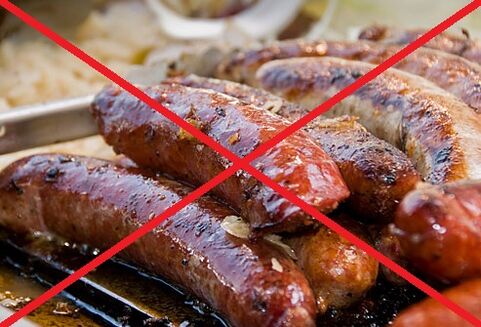
Doctors recommend mastering the 5th table for patients with diabetes and concomitant diseases of the liver and biliary tract. The diet excludes fatty and fried foods, foods containing cholesterol, essential oils, oxalic acid. It is allowed to cook food or cook, you can stew, but in exceptional cases. This diet promotes the normalization of the digestive tract, rejuvenation and slows the development of diabetes.
With a diet chart number 10, you have to give up on fatty foods.
For diabetics with heart pathologies, a diet corresponding to diet 10. The developed table 10 is designed to normalize blood circulation, heart rate and restore metabolic processes in diabetic patients. Diabetic diet prohibits fatty, salty foods, foods that are irritating to the nervous, circulatory and gastrointestinal tract systems. Instead, you need to eat foods fortified with iodine, potassium, magnesium.
You can experiment with the recipes by adding some ingredients as allowed.
Healthy recipes
Vegetable snack
Cut 400 g of white cabbage, 6 cherry tomatoes, 2 carrots, 2 medium onions and 3 fresh peppers into large slices. The resulting ingredients need to be simmered for a short time over a small amount of vegetable oil and over medium heat. Served as a separate dish. Tasty with poultry and baked veal or fish. Season to taste.
Cabbage pancakes in the oven
Cut half a kilo of white cabbage, add parsley, dill, green onions, 1 tablespoon of kefir, 1 egg, 50 g of lightly salted cheese, 1 tablespoon of bran, flour (until the consistency of sour cream). Mix the resulting ingredients and send to a cold place for 30 minutes. Then, spread the pancakes on a baking sheet and bake until golden brown at 180 degrees.






















